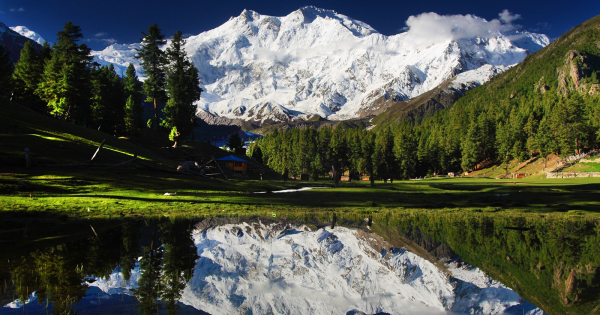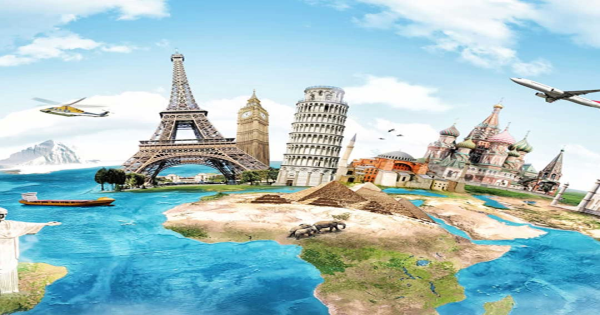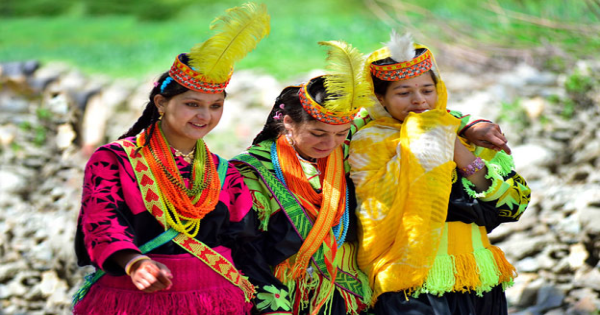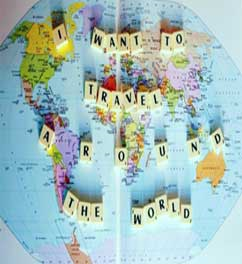Tourism provides a major economic development opportunity for many countries and a means of improving the livelihoods of its residents. Both the public and private sectors involved in tourism depend on planning to achieve sustainable tourism development that respects the local community, creates appropriate employment, maintains the natural environment, and delivers a quality visitor experience. However, many tourism destinations have pursued development without proper planning and without considering the many impacts such development will bring to the community.
Tourism has many potential benefits it can be an important source of jobs for nonmetro communities, especially for those that are economically underdeveloped. Because jobs in the tourist industry often do not require advanced training, local residents with few skills can readily work as food servers, retail clerks, and hospitality workers. Tourism also not only offers business opportunities to local residents, but it can serve as a vehicle for marketing a place to potential residents and firms, as today’s tourist may return later to retire or start a business locally. Many of these risks, however, can be mitigated if proper planning is employed at the outset of tourism development. There are different factors which play very important role in tourism development such as:
• The planning of tourism;
• The marketing of tourism;
• Tourism and local development;
• Sustainable tourism development; and
• Economic and other effects of tourism.
First of all we will discuss here tourism planning approaches to achieve the goals and objectives of tourism development for a destination. For the purposes of discussion, a tourism destination can mean an entire country, a region, an island, a resort area, or a single project. The tourism plan is generally a formal document to guide both public sector and private sector development activities. Destination planning includes many different forms of planning such as economic development planning, land use planning, infrastructure planning, and social services planning and involves many groups with different perspectives including governments, private investors and developers, and local communities.
Importance of Planning
Tourism planning is primarily economic development planning that is directed towards tourism-related objectives which differ between the public sector and the private sector. In the public sector, most planning is done by different levels of government. Public sector tourism planning includes consideration of economic and social factors, land use policies and zoning controls, environmental concerns, infrastructure development, employment concerns, and the provision of public services. Private sector tourism planning is usually concerned with investment objectives involving various aspects of product development, building and design, financial feasibility, marketing, management and operations.
Tourism planning is important because it provides a common vision, direction and commitment for tourism which are the result of participation of many representatives. The process of tourism planning includes:
• Assessing the possible impacts of development and the resource problems which will be faced;
• Analyzing the competitive status of a destination and its ability to respond to changes in the travel market and
• Providing a level of stability and predictability in the progress of the overall development of tourism in a given area.
Levels of Tourism Planning
Tourism planning is implemented at different levels from the general level which may apply to an entire country or region down to the local level which may apply to detail planning for specific resort. What is important to emphasize is the tourism planning and development must be integrated among all levels to take into account different levels of concern and to avoid duplication of efforts and policies. Each level involves different considerations as follows:
• International level - Tourism planning at the international level involves more than one country and includes areas such as international transportation services, joint tourism marketing, regional tourism polices and standards, cooperation between sectors of member countries, and other cooperative concerns.
• National level - Tourism planning at the national level is concerned with national tourism policy, structure planning, transportation networks within the country, major tourism attractions, national level facility and service standards, investment policy, tourism education and training, and marketing of tourism.
• Regional level – Tourism planning at the regional level generally is done by provinces, states, or prefectures involving regional policy and infrastructure planning, regional access and transportation network, and other related functions at the regional level.
• Local or community level- Tourism planning at the local level involves sub regions, cities, towns, villages, resorts, rural areas and some tourist attractions. This level of planning may focus on tourism area plans, land use planning for resorts, and planning for other tourism facilities and attractions.
• Site planning level - Site planning refers to planning for specific location of buildings and structures, recreational facilities, conservation and landscape areas and other facilities carried out for specific development sites such as tourism resorts and may also involve the design of buildings, structures, landscaping and engineering design based on the site plan.
Tourism Master Plan
Many tourism destinations have an overall or general plan that includes all aspects of the tourism development process. This is often referred to as the tourism master plan and sometimes called the comprehensive master plan. A master plan for a destination will vary by project depending on the type of destination being developed, its current level of development, and the theory or style of planning being used. Elements of a master plan usually include economic development, human resources, environmental impacts and social and cultural impacts. Master plans are designed to cover a certain time frame or period such as a five-year plan or a ten-year plan.
Elements of a Tourism Destination Plan
Tourism destination plans generally include the following elements:
• Tourism Demand Analysis - Demand analysis examines the existing and intended visitor markets for the destination. It involves a market analysis that examines the likely tourist arrivals and characteristics and the travel patterns and trends of the markets. Demand analysis is essential in understanding the competitiveness of the destination with other tourism destinations with similar attractions.
• Tourism Supply Analysis - Supply analysis examines the destination itself including its attractions, accommodations, and facilities. The analysis should include transportation, infrastructure, human resources, and other factors which have a direct or significant impact on the quality of the visitor experience. In the assessment of a new development for a previously undeveloped area, site selection is an important element and the analysis will examine various locations or sites for proposed hotels and commercial buildings. In the case of self-contained resort destinations where planning is for integrated resort development, consideration must be given to a number of factors including:
• Relationship of the site to tourist attractions
• Desirability of climate
• Attractiveness of physical environment
• Availability of land for development
• Access to tourism gateways and regional attractions
• Adequate transportation and utilities infrastructure
• Attitudes of the resident population to the development
• Availability of a local work force and sufficient housing
• Tourism Impact Analysis - Two of the most important impacts in a tourism plan are the environmental impacts and the social-cultural (socio-cultural) impacts of development. While tourism generally is considered environmentally friendly, sustainable tourism development places a high priority on preservation of the environment including land use, water quality, natural scenery, and waste disposal. An important goal of tourism planning should be to protect the natural setting and avoid exploitation of the natural resources. Many analyses include a study of the carrying capacity of a destination which defines the environmental and physical limits and ability of the destination to accommodate a given level of visitors with the least destruction to the natural resources. Social-cultural impacts concern the pressures and changes that tourism might bring to the resident population in a particular destination. Tourism can have both beneficial and harmful effects on local culture as a result of the use of culture as a tourist attraction and the direct contact between residents and tourists.
• Economic and Financial Analysis - For most destinations, economic development is the primary reason for tourism development. Tourism is viewed as a source of visitor expenditures which will benefit the local economy, creating spending and employment while increasing the standard of living of the local population. However, the economic perspective differs between the public sector or government and the private sector. For the public sector, the economic benefit for the local community is the most important concern. In the economic analysis for the public sector, the areas which are examined are the type of visitor and spending habits of the visitors, the products and services that the visitors seek, the importation costs and supply of goods required by visitors, the costs related to infrastructure development and maintaining an adequate work force with the required skills and training for the industry. The economic effects of tourism include changing work and consumption patterns, standards of living, and social roles and practices. For the private sector, financial risk and profitability are the primary concerns including the sources of capital for the planned project, extent of foreign ownership or control, wage rates for the local labor force, and availability of private sector funds for investment.
• Action Plan and Recommendations – The action plan is the final product of the planning process and will depend on the goals of the plan. It generally includes a summary and analysis of all of the data used in the planning process and includes strategies, guidelines, recommendations, and schedules for development.
Tourism can also enhance local quality of life. For example, tourism can serve as an important source of tax revenues for local jurisdictions. Some areas may be more willing to levy higher taxes on tourists because they are transitory, and, hence, may be perceived by local authorities as being more captive to user fees and other forms of taxation. This can lead to higher quality public services and lower local tax rates. Tourism can also support local culture in tourist areas by encouraging restoration of local and regional historic sites. And tourism, which is generally considered to be a relatively clean industry, may foster local conservation efforts.
Benefits deriving from tourism development must be balanced against potential negative effects. Jobs in the travel and tourism industry are frequently low-paying and seasonal and often offer limited benefits. In some cases, particularly where tourism strategies are ineffectual, local residents may have to pay for tourism marketing and infrastructure through higher taxes. Tourism can also increase demand for land in rural areas, which may inflate real estate prices, potentially putting the cost of housing beyond the reach of the average local resident. Tourism may directly lead to unsightly sprawl in rural areas by creating a demand for development. Other negative side effects include potentially higher rates of crime and greater demand for local services, such as police and fire protection and sanitation services, which can be expensive to provide. Tourism can also risk changing the rural “sense of place” for some communities. Increased crowding and traffic congestion may also result with an influx of tourists into an area. Greater demand for local arts and crafts can also potentially lead to a lowering of the quality of these products. Finally, tourism risks degrading natural resources in rural areas unless environmental sustainability efforts are undertaken. (Continue).
A Rehman
Top Contributors
Related Articles
Summer Vacations are here: Explore these beautiful places in Pakistan during your holidays
- Team Ilmkidunya
- 13/Jun/2023



























.jpg)















